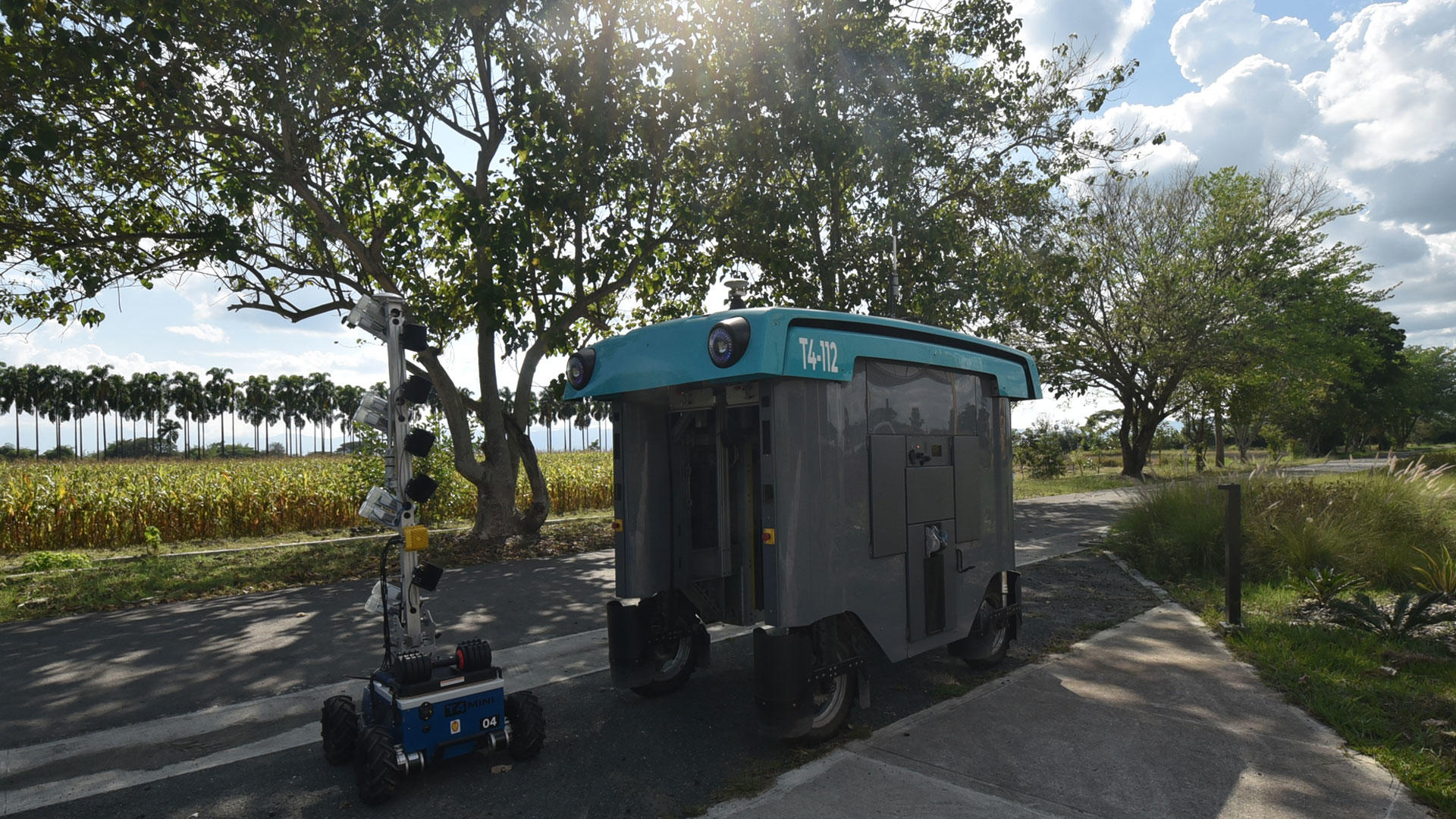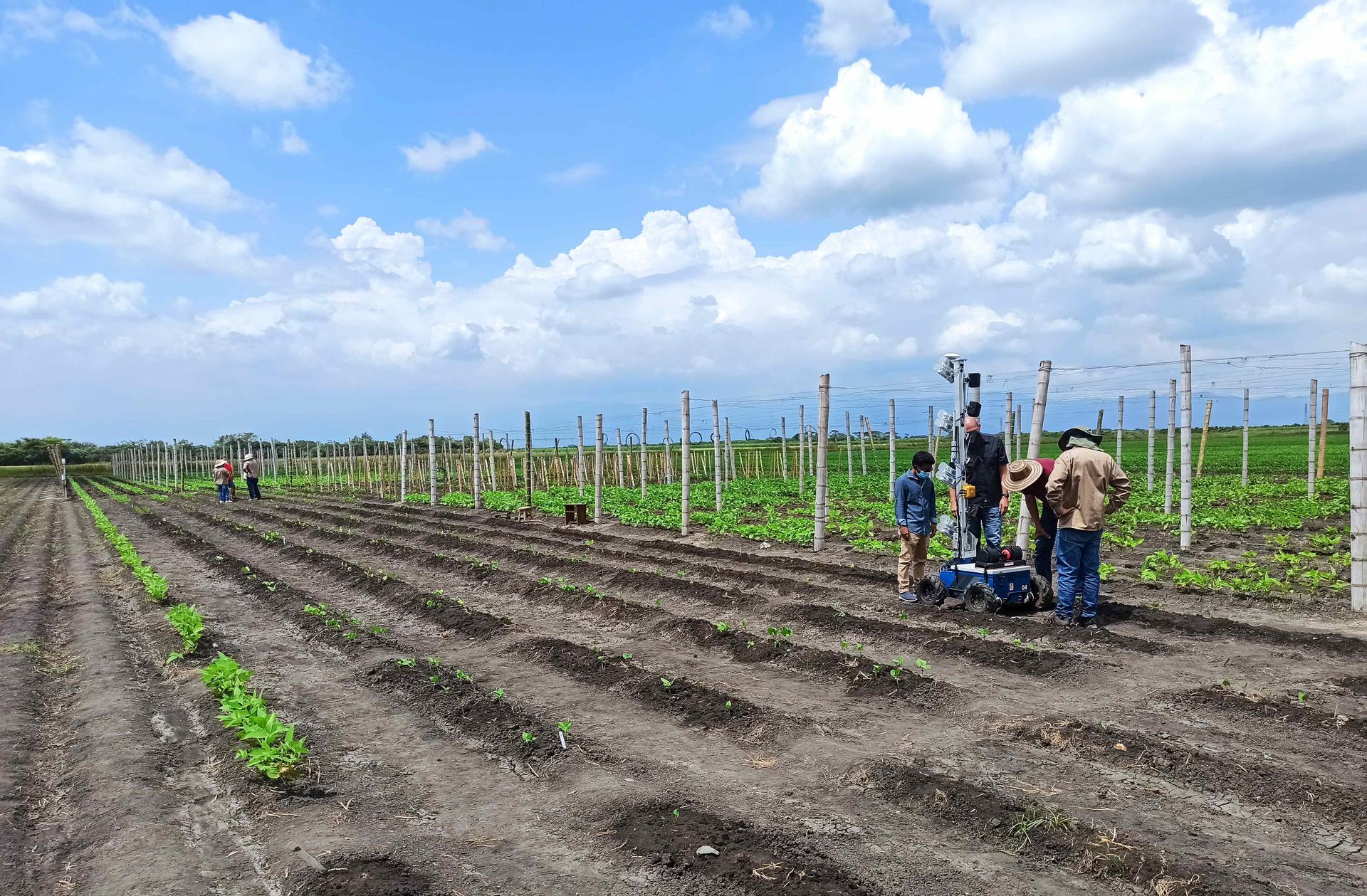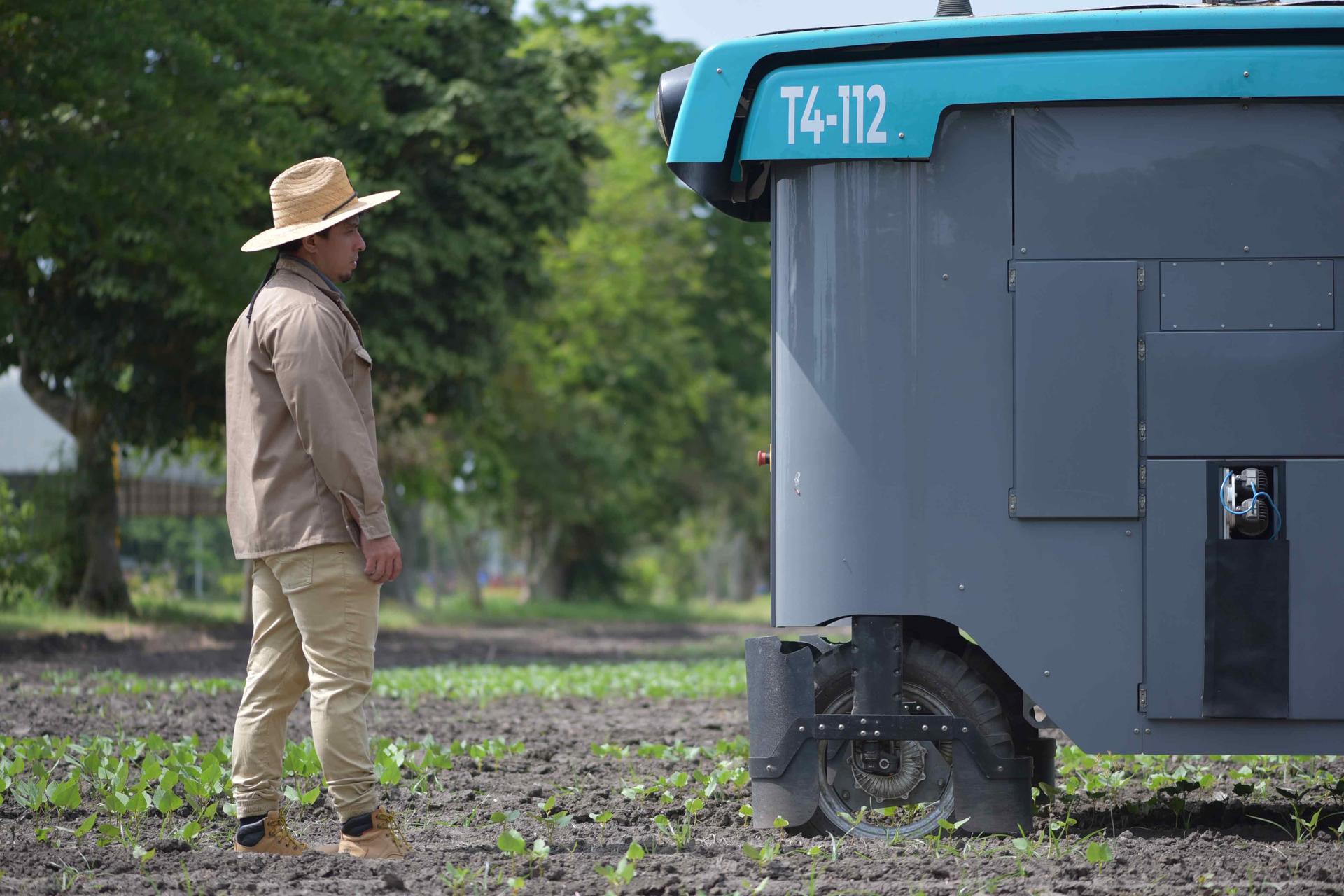Blog Meet Don Roverto and Tatiana, the robotic vehicles helping to breed better beans

On a visit to the Alliance’s Americas Hub, don’t be surprised when you encounter these rovers that analyze and optimize bean fields.
By: Elizabeth Ramirez
Palmira, Colombia: While walking around the Alliance’s campus, in addition to the nearly one thousand people working there, you may also spot two robots rolling through our bean fields. They are “Roverto” and “Tatiana”, the nicknames provided by the Biotechnology team led by scientist Michael Selvaraj. These robotic vehicles, or rovers, collect and analyze data for the improvement and development of crop varieties.
Before 2016, crop breeding entailed hard work monitoring crops day after day. Researchers could spend hours, days, even months crossing the fields under the sun or rain, with a notebook and pen in hand to record every feature, studying different plant traits, so they could subsequently analyze all the collected data (this is known as “phenotyping”). Today, the Alliance of Bioversity International and CIAT is using a digital phenotyping approach, which enables unprecedented, faster, and more accurate crop analysis. “Roverto” and “Tatiana” can obtain data that will allow them to explore and predict different bean crop traits, such as the amount of plants flowering, the count, area, and color of the leaves, as well as pod size.

“It is not only a matter of capturing an image and analyzing it. Here, we are combining robotics with machine learning, and deep learning. I would say this is the best combination,” says Michael Selvaraj.
The T4, better known as “Don Roverto”, weighs 900 kg and is fitted with six sensors which capture high-resolution images. Despite weighing almost a ton, Roverto is designed to cross fields of bush beans without damaging the crops. Lateral sensors capture different angles and create a 3D image of the plant more thorough than those generated by drones.

On the other hand, “Tatiana”, considered the mini version of the T4, weighs 80 kg and is fitted with eight sensors. Its height enables work with climbing beans. Both robots have undergone an experimentation stage and are able to adjust to the structure of different plants to collect data from different crops, and even through a GPS connection, they know the location of each plant, so they can go back and capture details on crop growth.

“The robots will contribute to a more accurate selection of bean genotypes, which will be very useful for the pre-breeding program and the selection of varieties. It will also bring new improvements to bean disease control,” states Selvaraj.
“Roverto” has been working for a year and a half, while “Tatiana” has been in the Palmira Campus for one year. Both are part of the fourth generation of this type of robots and, while thus far they have been working exclusively for the bean program, going forward, this project is expected to expand to other crops, such as rice, cassava, and tropical forages.

This collaborative project developed with the Mineral Project by X, a Google company, represents a step towards a new stage of digital agriculture, where specific features may be found in every crop through technology, which will help transform food systems and landscapes to sustain the planet, foster prosperity, and nurture people in the midst of a climate crisis.
“Our purpose is to have all the information collected through Mineral’s artificial intelligence technology available to be used by plant breeders, not just from the Alliance, but from around the world, and that it helps them speed up their work and develop new and improved crop varieties,” indicates Selvaraj.
Learn more about our collaboration with Mineral: The Artemis Project

